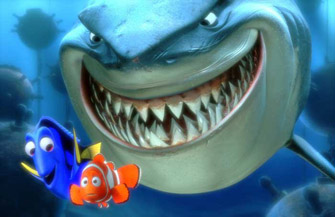|
|
A-List: Carte Blanche MoviesBy Josh SpiegelJuly 15, 2010
Finding Nemo I know what you’re thinking. How could a Pixar movie, let alone any Pixar movie after their first, be a carte blanche movie? It’s worth remembering the stories that surrounded the production of Finding Nemo. This 2003 classic was released during the height of the contentious discussions between the Walt Disney Company and Pixar Animation Studios, when there was even the remotest possibility of a Toy Story 3 that was made outside of Pixar (a nightmare that has long since been averted, but still a scary thought). What’s more, the man at the head of Disney at the time, Michael Eisner, thought that Finding Nemo was going to be the one. Yes, he thought Finding Nemo was going to be the first movie that would prove that Pixar Animation Studios was, in essence, human. He thought it would suck. He thought it would fail. Andrew Stanton, who had put so much into the movie, would fall, as the man behind the story. Putting it mildly, Michael Eisner was wrong. By the time you’re reading this, Finding Nemo is no longer the highest-grossing Pixar film ever made, but with $339 million in the bank domestically, it took the third film in the Toy Story franchise (and in 3-D, too) to top this fishy tale. Finding Nemo was further proof that people like Andrew Stanton may make some mistakes (another famous story about the film’s production is that another great actor who’ll go nameless here had performed as Marlin, but didn’t work out as the lead), but they know what they’re doing. Stanton is now working on the first live-action film from Pixar, John Carter from Mars, and he’s still sizzling off the success of WALL-E. But Finding Nemo was the movie that proved this guy doesn’t get questioned; he gets what he wants, and rightfully so.
|

|
|
|

|
Sunday, April 28, 2024
© 2024 Box Office Prophets, a division of One Of Us, Inc.


